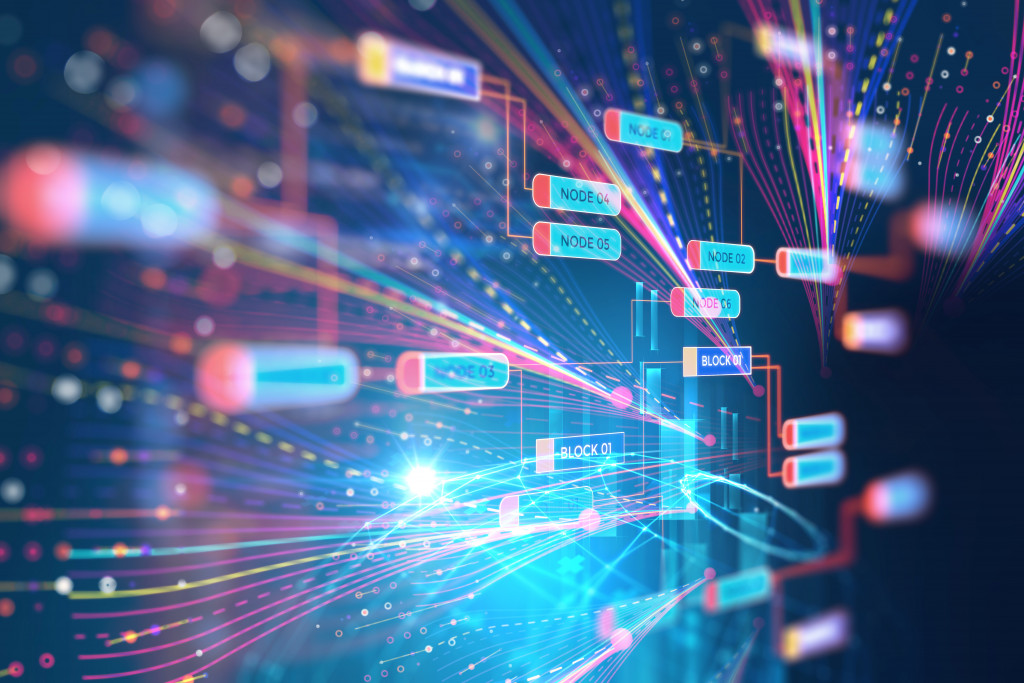It was in 1822 when Charles Babbage built the first-ever mechanical calculator called the Difference Engine. It could compute a set of operations on polynomial functions and print the results on paper. Basically, it is capable of performing a series of addition, multiplication, subtraction, and division.
And then in 1936, Alan Turing built the Turing machine. It can follow a series of logical instructions. Its operations are the foundation of the modern computers used today.
In 1946, the Electronic Numerical Integrator and Computer (ENIAC) was invented by J. Presper Eckert and John Mauchly. It was the first fully functional digital computer. Four years later, the U.S. government introduced the first computer capable of performing functions like storage and running a program from memory.
IBM launched the first scientific computer available for commercial use in 1953. Development continued until 1975, the first personal computer (PC) and the laptop were created.
Since the first computers were as big as a bedroom, the continuous development of technology made it possible for data computing to fit in people’s pockets. The devices before used to be big but only handled small amounts of data. Science and technology reversed this and made the opposite possible. Even a smartwatch that doesn’t weigh more than 100 grams can access the internet, make a call, and play music.
What is big data?
Simply speaking, big data is the presence of ginormous data processing and exchange that happens every millisecond of every day. It is estimated that there are seven billion people on planet Earth. Imagine half of the population has at least one mobile phone. That is 3.5 billion people sending a text message every day. That is the minimum and most basic task you do on the phone, and that is still a lot of data to process. Every character, every period, every space is accounted for.
All the calls, internet searches, Facebook posts, and tweets are part of the big data. A study reveals that each person sends and receives 12 gigabytes of information per day. If you multiply that to half the Earth’s population, you will realize the volume of information people get every day is a lot.
You also have to note that the exchange happens at a breakneck speed. Once you press the send button, the other person receives it instantaneously. Now, that is only the personal side of big data.

How is big data used in business?
For businesses, the benefit of big data comes in the form of streamlined services, effective marketing, and a boost in sales. In the old days, you have to conduct surveys, interviews, and ask for suggestions through letters to perform market analysis.
Now, a click on Google Analytics will show you who your customers are. You will understand their behaviors, their demographics, and their preferences in one sitting. It’s like reading a report on what a customer does and wants so you can target them directly. For example, hoteliers take advantage of performance hospitality analysis tools to forecast consumer preferences and market demand.
Advertising now is much easier but is also complicated. Customer service is more accessible. The creation of new products and services is no longer a hit-or-miss.
How is big data used in healthcare?
Do you ever wonder how health institutions were able to identify COVID-19 hotspots all over the world? Thanks to big data, health maps are accessible to institutions. The instant reporting of cases is also possible. All this information can be stored in one big database and analyzed by computer programs.
In the healthcare industry, big data is used in testing machines, laboratory processes, and record-keeping. Doctors can even predict future pandemics because they have access to these data. Private hospitals, which are also a business, use data analytics in tracking overall performance. They use big data to improve their services and gauge customer satisfaction.
How is big data used in education?
Even in education, big data is utilized to improve the experience of students. Universities use data to gauge their students’ abilities, preferences, and learning levels. The learning experience can be personalized based on the capacity and preferences of a student.
The use of artificial intelligence (AI) is also stepping up the game for educators. Bots can answer redundant questions and make the presentation of learning materials more interactive. There are virtual classrooms and virtual laboratories that help students access information more easily.
If you look back, in a small amount of time, so much has changed. Now, imagine how much is going to change in the next ten or twenty years. Probably the next inventions are something humankind never even imagined.






